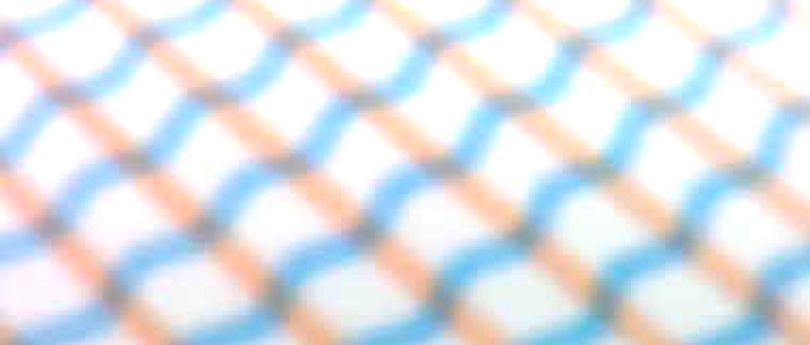Uncommon Ground

Uncommon Ground Logo
— Multidisciplinaire samenwerkingen tussen vormgeving en kunst, en media technologie.
Dit artikel is alleen beschikbaar in het Engels
The Uncommon Ground book investigates the new culture of collaboration which emerged from recent developments in which areas of art and design have creatively fused with media and technology. This fusion of disciplines has given rise to powerful new industries, cultures, and social movements. In all sectors, important concepts no longer come into existence as 'isolated products, devices or websites. They rather exist in a system, or network, of both tangible and intangible elements’. These developments extend and intensify the need for knowledge sharing across a broader combination of disciplines and sectors.
(Un)common Ground emphasizes the fact that collaboration for competitive advantage is matched in importance by the an equally urgent need for a deeper and more responsible understanding of what is at stake when we work together across disciplinary boundaries. The desire for deeper understanding is aligned to the fact that the era of networks not only makes us more interconnected but also heightens the awareness of our interdependence.
Uncommon Ground is based around case studies involving both major institutions and companies along with smaller independent experimental networks. Examinations of case studies are interspersed in this volume with reflective essays by some of today’s leading thinkers and practitioners. By juxtaposing the concrete and the reflective with the tangible and the intangible, this volume begins a process of mapping the varieties of experimental forms that are emerging as the various actors attempt to navigate the opportunities and balance the contradictory forces and values at work. Sometimes these experiments have been designed, planned and orchestrated but more often they have evolved through countless improvisations. This is the complex ecology we have begun to map. The result is a range of practical and inspiring examples providing insight into the complex rewards and challenges of both interdisciplinary and cross sector collaboration.
This book is the first published outcome of a programme of research on collaborative practice that began with an expert meeting in Amsterdam in September 2006. In this meeting a group of researchers, artists and designers examined a number of concrete case studies from multiple perspectives. The Uncommon Ground research process combines the empirical, comparative analysis based on tracking a number of case studies whilst regularly opening up the findings for a wider process of reflection and theorisation. In the future we will continue this approach, tracking our key case studies whilst periodically introducing new examples, platforms and partners. A new Uncommon Ground expert meeting is planned in Amsterdam for September 2007, as a partner event at Picnic 07.
The UK launch takes place at the ENTER Festival in Cambridge on 25 April 2007. www.enternet.org.uk
Uncommon Ground will be launched in the Netherlands at the Cultuur 2.0 Conference, on 30 May 2007 at Felix Meritis in Amsterdam. The conference, organised by Virtueel Platform, is a 2-day international conference & lab designed to introduce a web 2.0 mindset into the creative processes and strategies of cultural & art institutions and artists. Keynote speaker at the conference is Charles Leadbeater, one of the contributors to Uncommon Ground www.virtueelplatform.nl
(Un)common Ground is the result of a collaboration between: Virtueel Platform, Utrecht School of the Arts and Arts Council England
Editors: Cathy Brickwood, Bronac Ferran, David Garcia, Tim Putnam
Contributors: David Garcia, Professor of Design for Digital Cultures: University of Portsmouth/School of the Arts Utrecht; Garrick Jones, Senior Research Fellow LSE, senior lecturer of Industrial Design and Engineering Royal College of Art & Design, partner Ludic Group; Geke van Dijk, director of STBY, doctor in computing science with a specialisation in Human Computer Interaction; Yanki Lee, Helen Hamlyn Centre; Sam Bucolo, Research and Development Director for the Australian CRC for Interaction Design International Design, ACID; Tim Putnam, Professor Material Cultures at Middlesex University and University of Portsmouth; John Thackara, Doors of Perception and Programme Director of Design of the Times or DOTT07; Andrew Bullen, Direct of Media Guild; Gerard Hollemans, senior scientist on user-system interaction research, Phillips Research Eindhoven; Simon Robertshaw, formerly Head of Research, International Center for Digital Content at Liverpool John Moores University, currently director of the Centre for Digital Creative Industries at the University of Central Lancashire; Charles Leadbeater, senior government advisor and writer; Anne Galloway, lecturer and SSHRC Doctoral Fellow in Anthropology and Sociology at Carleton University in Ottawa, Canada; Caroline Nevejan, independent researcher and designer with a focus on the implications of technology on society; Sher Doruff, Head of the Research Programme at Waag Society, Amsterdam; Rob van Kranenburg, freelance thinker in the triangle of new technologies, policy and bottom-up initiatives, head HKU BA Experience Design from September 07; Samuelle Carlson, social anthropologist, evaluator Artists' Insights: Interact project for Arts Council England; Anne Nigten, manager V2_Lab, the aRt&D department of V2_, Institute for the Unstable Media, Rotterdam; Matt Ratto, founding member of the Virtual Knowledge Studio for the Humanities and Social Sciences (VKS) in Amsterdam; Bronac Ferran, researcher and cultural producer, previously Director of Interdisciplinary Arts at Arts Council England.
Design: Novak Ontwerp Publisher: Bis Publishers, Amsterdam
